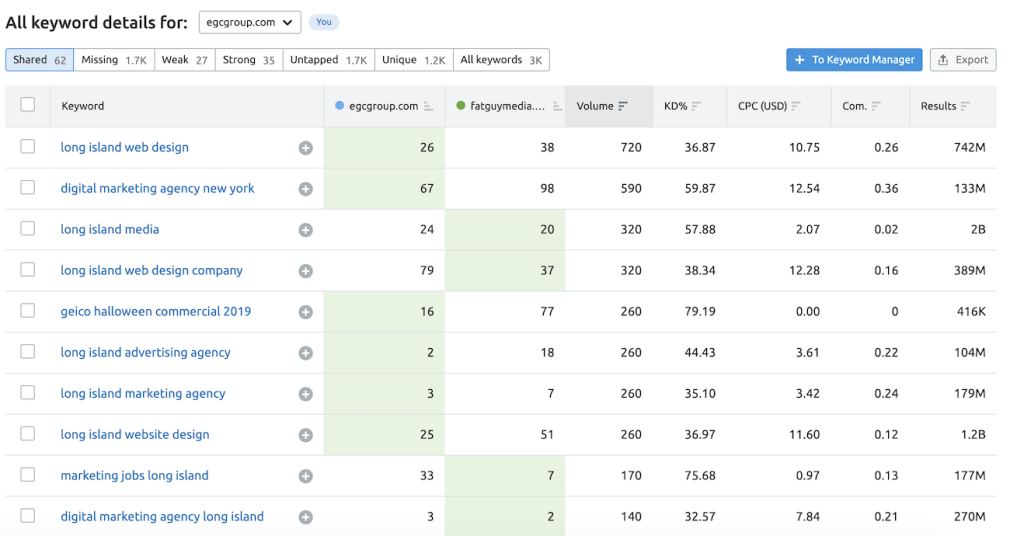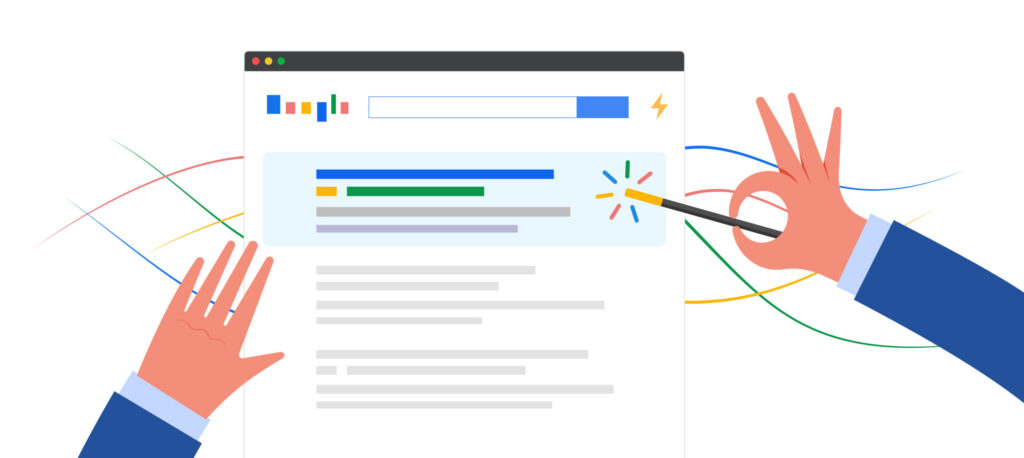When you’re competing against thousands of other websites for Google search engine result page (SERP) rankings, your SEO content strategy can’t exist in a vacuum. You need to understand what your competition is doing, so you can do the same thing better and rank as a result.
SEO Content Gap Analysis can help you achieve this. It refers to the process of evaluating your content to see if it has any “gaps” as compared to the content that is performing well in SERPs.
Maybe your content lacks visuals that reduce its readability. Or maybe it doesn’t cover the topic in quite as much detail. Maybe there are key secondary keywords missing or the information is not presented in the most actionable way. Identifying all such areas where your content falls short and improving upon those can significantly improve SEO performance.
In this blog, we will teach you to perform SEO gap analysis to improve your existing content and overall content strategy. We’ll also suggest tools you can use and tips that can help you maximize your efforts. Let’s dive in.
The Importance of Staying Competitive in SEO
Because 68% of purchases begin with a Google search, everyone wants to capitalize on SEO. There are typically thousands of content creators vying to rank for any particular keyword. But the thing is, 90.63% of all content gets zero traffic from Google.
What makes the 9.37% winners? They typically have a leg up on the competition.
Their content matches the search intent most closely, is valuable, offers unique insight, and is actually helpful. And even though it costs more time and resources to create content that’s truly better for readers, it’s one of the only ways organizations can maximize their chances of winning long-lasting search rankings.
As you’d guess, this has a direct impact on your SEO performance and the business’s bottom line.
Why Learning from Your Competition is the Key to SEO Success
Leveraging insights from your competition’s website is a big component of understanding how you can outperform it. Because it’s not just about keeping up with them; it’s about setting your content apart.
Here’s how monitoring your competition can help your Content strategy stay agile:
- You can adjust your strategy without making the same mistakes: Studying your competitors’ content, identifying what works, and learning from their success saves you time. You don’t have to test a new strategy right off the bat; you can just see what’s working for them and improvise. Conversely, you can pinpoint their shortcomings and avoid making the same mistakes.
- You can easily adapt to evolving trends: SEO and online marketing are both dynamic fields. And things change so quickly that sometimes you can miss a beat. By tracking what your competitor is doing, you can easily hop on the bandwagon of new trends that you may have overlooked.
For instance, search trends are impacted by seasonal changes, war, current affairs, and even festivals. If your competition releases content that’s geared toward a holiday — that could be your cue to do research and see if that’s worth pursuing for your business too.

Performing an SEO Content Gap Analysis
- Identify Pages You Want to Improve with a Content Audit
Improving every page can’t be a priority for you, especially if you have a huge website. So, start by identifying web pages with the most potential.
These will be keywords that are already ranking between position 10 and 100.
You can also identify pages that were performing well before, but the performance has slowed down over time. Their performance can likely be enhanced with fresh updates.
Note: During the audit, also take time to identify all pages that bring in zero traffic. If the content is poorly written, you may be better off just starting over or merging two topics into one. Don’t bother with content that doesn’t match search intent at all.
- Review the Content Quality of Google’s First Page Content
Once you have identified which pages need to be improved, look for inspiration to improve it.
Start by looking at web pages already ranking on page 1 for your target keywords. If they are there, they are doing something right. Your job is to identify what that is so you can leverage it for your own growth.
Here are things to look out for:
- Is their content fresher? Did they update it to reflect any new stats or changes in the world?
- How long does it take for the article to get to the “meat” of it? Does every sentence add value?
- Is the information actionable? Is there something missing that would have made it easier to understand the topic?
- Does the web page load fast enough? Is it easily skimmable and cater to short attention spans? Is the overall user experience good?
- Are they using the same format as yours?
- Is their article offering a unique take on the topic?
Improving on even some of these areas will only make your content better and give you a leg up to outrank the competition.
- Study Your Competitor’s On-Page and Off-Page SEO Strategy
Just producing good content isn’t always enough to win in search results. For competitive keywords, you will also need to see if they get more backlinks than you do or use any on-page tactics that you don’t.
Pay attention to the anchor text they use, the number of backlinks that point towards this particular web page (and the whole domain), and the number of internal and external links. Also, see if they are using any keywords or entities that you aren’t using.
If their load speed is significantly faster, or UX is much cleaner — take note.
Take advantage of these insights to get your site on par with your competitors in terms of authority, user experience, and SEO best practices.
- Content Strategy Development
Based on your research, define clear content goals for each piece of content you select for improvement. Prioritize the topics and keywords that are most important for your business, but also have high ranking potential.
Then, develop a content plan that outlines what content needs to be created or improved. Finally, set a schedule for content production and publication.
- Content Creation and Optimization
Craft high-quality content that addresses your audience’s needs, and implement on-page SEO techniques for better search visibility.
- Monitor Results
Regularly monitor your content’s performance after you make adjustments. It may take a few weeks for positions to change. If nothing happens, go back to the drawing board and make adjustments accordingly.

Using Tools for SEO Gap Analysis
While you can absolutely do an SEO gap analysis on your own, SEO tools can help you do this at scale and much quicker. There are three types of tools you can use to perform different parts of the SEO gap analysis:
Keyword Gap Analysis Tools
Keyword gap analysis tools are designed to help you discover relevant and valuable keywords your competitor’s ranking for that you aren’t. You can compare your website’s keyword portfolio against up to 5 competitors.
Here are the best tools for this:
The way to perform keyword gap analysis varies across tools, but the logic remains the same: you can see the positions they occupy for different target keywords and uncover keywords you don’t target at all. Some tools like Semrush will also recommend you add certain secondary entities to enhance your page for that particular keyword.
The way to perform keyword gap analysis varies across tools, but the logic remains the same: you can see the positions they occupy for different target keywords and uncover keywords you don’t target at all. Some tools like Semrush will also recommend you add certain secondary entities to enhance your page for that particular keyword.

Competitor Analysis Tools
Competitor analysis tools allow you to identify your competitors, compare their strengths and weaknesses, and make data-driven decisions to improve your own strategy. Here’s how they can help:
- Identifying Competitors: Your competition can vary across keywords. Some of your competitors may perform well for one keyword, but not for another. With such tools, you can see your competitors on a page level. Also, you can view your top 5 competitors and their whole SEO profile.
- Traffic and Rank Analysis: You can track your competitors’ website traffic and rankings. It will also show you metrics like total visits, unique visitors, and page views. Using this, you can easily figure out pages that bring them the most traffic and create something better.
- Backlink Profiles: You can examine the backlink profiles of your competitors, including the quantity and quality of their backlinks. You can see the source of the backlinks, and anchor text, and assess the authority of referring domains.
Use this information to build backlinks from the same or similar websites. Once your content is truly better than theirs, you can also write to the websites they get links from and ask them to link to your better piece instead.
- Content Analysis: You can see what formats they use and what topics they write about. This helps identify content gaps, potential opportunities, and trending subjects.
- On-Page SEO Analysis: You can assess on-page optimization factors of competitors’ websites, including title tags, meta descriptions, header tags, and content structure. Learn from this and make adjustments accordingly.
Top Competitor Analysis Tools
- SEMrush’s Competitor Analysis Tool: SEMrush’s tool helps users identify competitors and analyze their website traffic, organic search performance, paid search campaigns, and social media presence. It’s a comprehensive tool for understanding how competitors are faring online.
- SimilarWeb’s Competitor Analysis Tool: SimilarWeb offers insights into competitors’ website traffic, keywords, referral sources, and demographic data. Users can benchmark their performance against competitors and industry averages.
- SpyFu’s Competitor Analysis Tool: SpyFu specializes in competitor analysis for SEO and PPC. It provides data on competitors’ keywords, ad history, ad budgets, and backlinks. You can also track your performance over time.
- Ahrefs’ Competitor Analysis Tool: Ahrefs’ tool focuses on backlink profiles and content strategies. Users can identify competitors, analyze their backlinks, discover content gaps, and gain insights into the keywords they rank for.
Key Takeaways
SEO content gap analysis allows you to get “quick wins” from SEO. Rather than spending resources on creating content from scratch, you can get more organic traffic by simply leveraging your existing content and improving its performance.
At the heart of this process is the logic that you can simply do better at SEO by creating better content that already exists for that search query.
You can improve your own content by learning from your competitors, who can be a great source for learning what works and what doesn’t. By staying competitive, your business is also better suited to adapt to new trends and maximize its connection with its target audience.










